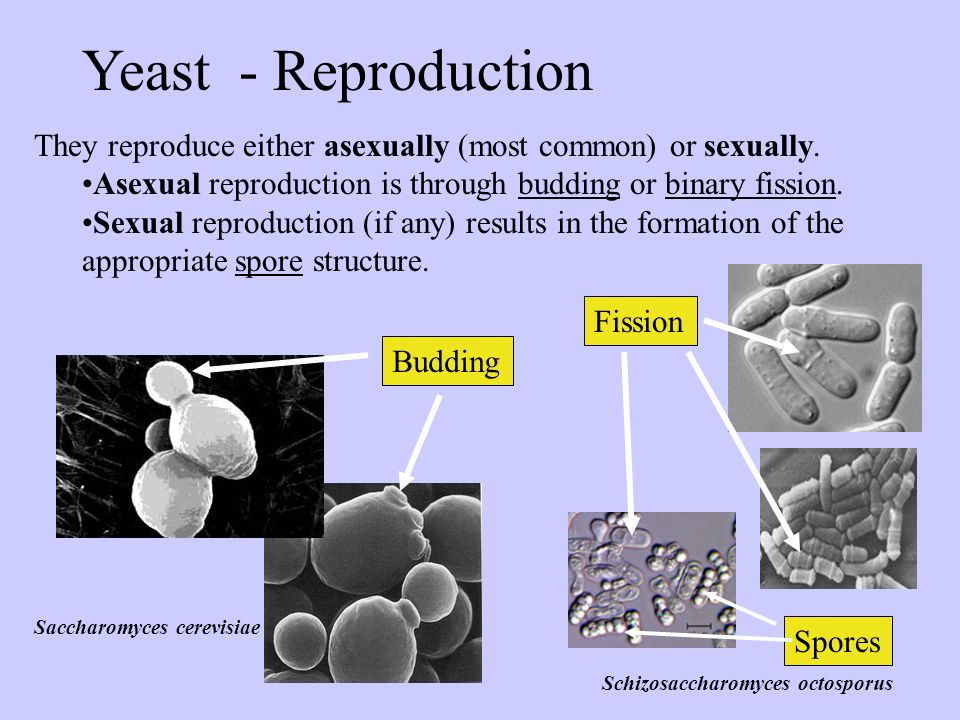Yeast Reproduction
Yeast cells reproduce both asexually and sexually, which makes reproduction easy irrespective of the environmental condition.
Yeast usually reproduces every two minutes and can multiply rapidly.
How does Yeast reproduce Asexually?
Yeast reproduces asexually through budding – a small part of the parent cell will bump, grow, and grow bigger, and when it matures, it detaches itself and start a new life.
Also on the asexual reproduction of yeast, the parent cell can divide itself into two cells and develop from there – this is called fission.
Asexual reproduction, which is also known as budding, occurs very frequently and gives rise to large colonies of yeast cells.
Budding begins by a small area of the cell wall softening and bulging outwards, allowing some cytoplasm to flow to it.
The nucleus then splits into two daughter nuclei. One daughter nucleus migrates into the outgrowth which is known as a bud.
This bud soon increases in size and other cell organelles such as mitochondria are formed in it.
Sometimes the bud separates immediately from the parent cell by the formation of a constriction between the two, after which the former proceeds to produce new buds.
However, quite often it remains attached to the parent cell and, together with the latter, gives rise to new buds which in their turn repeat the same process, so forming chains and sub-chains of yeast cells.
Sometimes under unfavorable conditions such as the lack of food and water, each yeast cell forms a thick wall, or cept, around itself, and in doing so assumes a more rounded shape.
The nucleus and cytoplasm within the cept then divide into four parts, each of which forms a thick cell wall of its own.
Each part is known as an ascopore, while the whole structure is called an ascus.
When favorable conditions return, the ascospores absorb water, grow and cause the ascus to burst open.
Each ascospore then grows into a yeast cell. the latter is smaller in size than the original yeast cell which formed the ascospores.
This small yeast cell may give rise to a yeast colony by budding. This only happens in certain species.
How does Yeast reproduce Sexually?
Yeast sexual reproduction does not occur frequently but it does occur.
The ascospores which developed from the fusion of nuclei from two cells are fused.
The cells meet in pairs and fuse with each other to form a zygote.
Each member of the pair puts out a protuberance which joins with that of the other member to form a conjugation tube.
The two nuclei enter the conjugation tube and fuse with each other.
This is a form of sexual reproduction and is known as conjugation.
The zygote may form a yeast colony by budding, in which case the cells in the colony will be larger than the cells formed in colonies that arise from ascospores. This only happens in certain species.
Eventually, some of the cells in this colony may undergo division to form an ascus.
In some species, the zygote formed as a result of conjugation divides and gives rise immediately to ascospores which are contained within an ascus.








